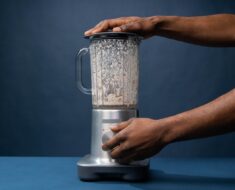
Choosing the right mattress is crucial for a good night’s sleep and overall well-being. With the wide variety of mattress types available, it’s essential to understand the pros and cons of each to make an informed decision. In this blog post, we will explore the four popular mattress types: innerspring, memory foam, latex, and hybrid. By examining their unique characteristics, benefits, and drawbacks, you’ll be better equipped to select the mattress that suits your individual needs. Let’s dive in!
Innerspring Mattresses
Innerspring mattresses are constructed with a network of metal coils or springs that provide support. Here are the pros and cons:
Pros:
- Strong support: Innerspring mattresses are known for their excellent support, especially for individuals who prefer a firmer sleep surface.
- Temperature regulation: The open design of innerspring mattresses allows for better airflow, resulting in a cooler sleep experience.
- Bounce and responsiveness: Innerspring mattresses offer a high level of bounce, making it easier to change positions during sleep.
Cons:
- Limited motion isolation: Innerspring mattresses may transfer motion across the bed, which can be disruptive for couples or light sleepers.
- Potential sagging: Over time, the metal coils in an innerspring mattress may sag or lose their shape, leading to reduced support and comfort.
- Noise: Some innerspring mattresses may produce creaking or squeaking sounds when pressure is applied.
Memory Foam Mattresses
Memory foam mattresses are known for their contouring properties and pressure relief. Consider the following pros and cons:
Pros:
- Pressure point relief: Memory foam molds to your body shape, reducing pressure on sensitive areas and providing excellent comfort.
- Motion isolation: Memory foam absorbs motion, making it an ideal choice for couples or individuals who are easily disturbed by movement.
- Longevity: High-quality memory foam mattresses are durable and can maintain their shape and performance for many years.
Cons:
- Heat retention: Traditional memory foam has a reputation for trapping heat. Look for mattresses with advanced cooling technologies to mitigate this issue.
- Off-gassing: Some memory foam mattresses may release an initial odor due to the manufacturing process. It usually dissipates within a few days.
- Sink-in feeling: Some people may find that memory foam mattresses contour too closely to the body, resulting in a “sinking” sensation.
Latex Mattresses
Latex mattresses are made from natural or synthetic latex materials. Let’s explore their pros and cons:
Pros:
- Natural and eco-friendly: Latex mattresses made from natural latex are a sustainable and environmentally friendly option.
- Responsiveness and bounce: Latex mattresses offer excellent responsiveness and bounce, making it easy to move and change positions.
- Breathability: Latex has natural breathability, allowing for good airflow and temperature regulation during sleep.
Cons:
- Cost: Latex mattresses can be more expensive compared to other mattress types due to the manufacturing process and materials used.
- Weight: Latex mattresses tend to be heavier, making them more challenging to move or rotate.
- Firmness options: Latex mattresses generally have a firmer feel, so individuals who prefer a plush or softer surface may need to explore different options.
Hybrid Mattresses
Hybrid mattresses combine the benefits of innerspring and foam materials. Consider the following pros and cons:
Pros:
- Versatility: Hybrid mattresses offer a combination of support, comfort, and pressure relief, catering to a wide range of sleep preferences.
- Enhanced support: The coil system in hybrid mattresses provides excellent support, while the foam layers offer contouring and pressure relief.
Cons:
- Cost: Hybrid mattresses can be more expensive compared to other mattress types due to the combination of materials used.
- Potential motion transfer: While hybrid mattresses often incorporate motion isolation features, some models may still have a slight degree of motion transfer.
- Weight: Similar to innerspring mattresses, hybrid mattresses can be heavier and more challenging to move or rotate.
Disclaimer: The affiliate link provided above is an affiliate partnership. If you make a purchase through this link, we may receive a commission at no additional cost to you. We only recommend products and brands that we believe will genuinely enhance your sleep experience.
Choose the Right Mattress for Your Needs
Selecting the right mattress is a personal decision that depends on various factors such as sleep preferences, comfort level, and specific requirements. Understanding the pros and cons of different mattress types can guide you in making an informed choice.
Whether you prioritize support and responsiveness (innerspring), pressure relief and motion isolation (memory foam), eco-friendliness (latex), or a versatile combination (hybrid), there is a mattress type suited to your needs. Consider your unique preferences, budget, and desired features to select a mattress that promotes restful sleep and supports your overall well-being.
Remember, a high-quality mattress is an investment in your sleep quality and health. Take the time to research and test different mattress options to find the one that provides the comfort, support, and durability you desire. Prioritize your sleep and wake up refreshed and ready to tackle the day.
Disclaimer: The information provided in this blog post is for informational purposes only and should not be considered as medical or professional advice. Please consult with a mattress retailer or sleep expert for personalized recommendations and guidance regarding the selection of the right mattress for your specific needs.
Affiliate Disclosure: This blog post contains affiliate links, which means we may earn a commission if you click through and make a purchase at no extra cost to you.






